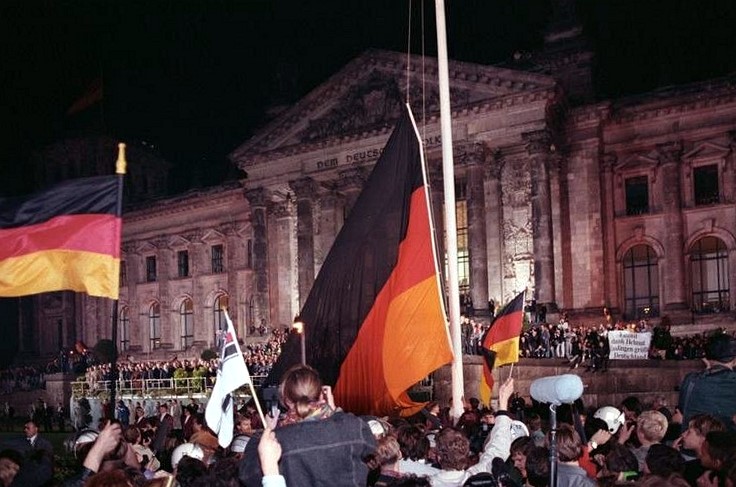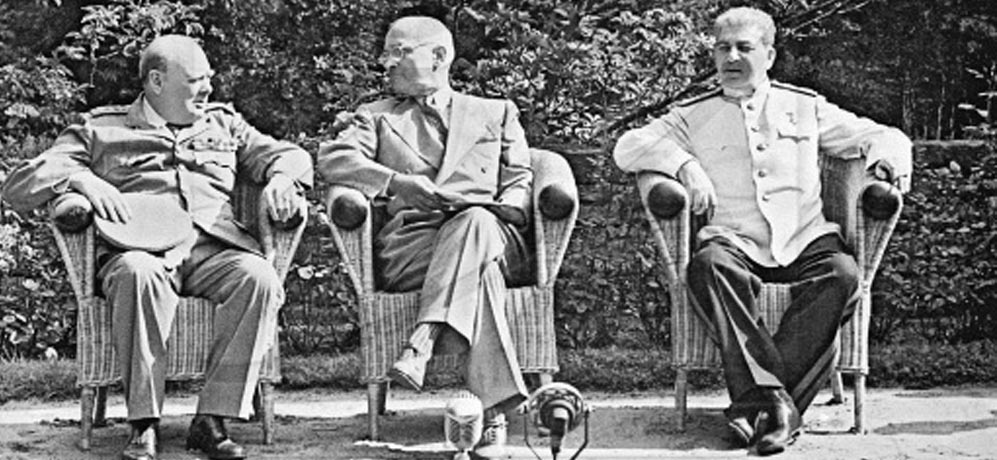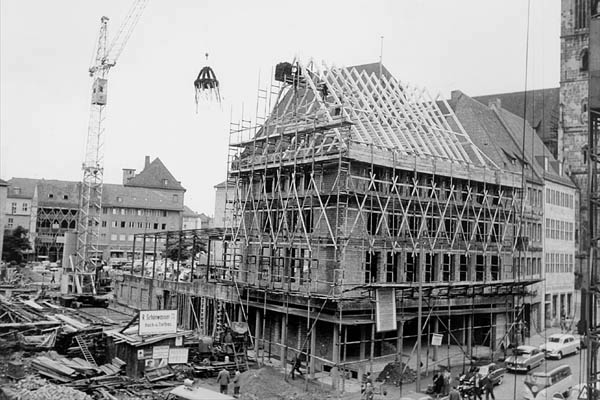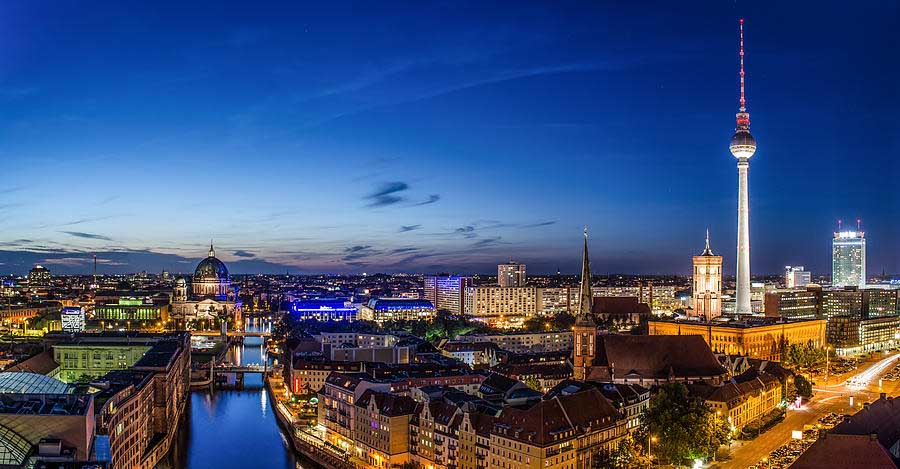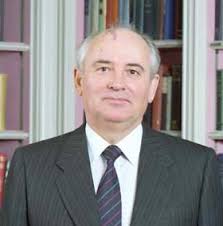
Mikhail Gorbachev was instrumental in the fall of the Berlin wall and the end of the cold war.
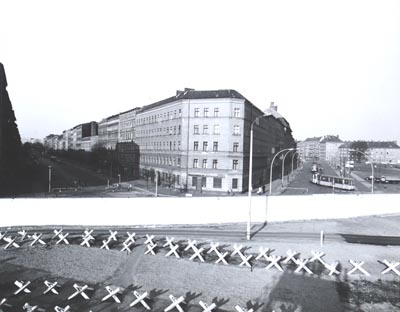
"The Anti Fascist Protection Barrier".
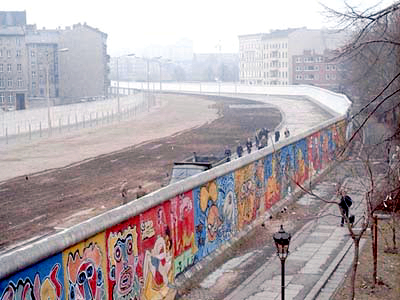
The Berlin wall was used as a canvas for many artists.
Cold War
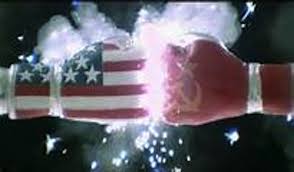 In 1945 with the victory of the USA, UK and the USSR over Germany in WW2 , a cold war conflict would follow were the western allies and Eastern block controlled by the Soviet Union. The concerns of the indirect confrontation between the USA and USSR, which divide the world and compete indirectly by opponents interposed in peripheral conflicts and crises. The world is divided into 2 blocks coherent economic, social, political, ideological. It is a bipolar world. The confrontation is highlighted and fought on many levels including propaganda, espionage, the arms race.
In 1945 with the victory of the USA, UK and the USSR over Germany in WW2 , a cold war conflict would follow were the western allies and Eastern block controlled by the Soviet Union. The concerns of the indirect confrontation between the USA and USSR, which divide the world and compete indirectly by opponents interposed in peripheral conflicts and crises. The world is divided into 2 blocks coherent economic, social, political, ideological. It is a bipolar world. The confrontation is highlighted and fought on many levels including propaganda, espionage, the arms race.Phases
- 1945-1947: the establishment of the Cold War, notably through the establishment of the "iron curtain" in Europe denounced by Winston Churchill in 1946.
- 1947-1949: The two blocks are created and set up their doctrines (Truman Doctrine for the US, Zhdanov doctrine for the USSR). End of the establishment of democracies (communist regimes) in Eastern Europe. The Western world adopts an economic organization (the Marshall Plan in 1947) and a military organization (NATO in 1949). It will be the same later for the eastern bloc (Comecon or CMEA for economic organization, the Warsaw Pact in 1955 militarily).
- 1949-53: the "hot" confrontation of the Cold War (including the Berlin crisis of 1948-49 and the Korean War (1950-53) and failures of Stalin (in Greece, Yugoslavia, in Berlin ...)
- 1953-1962: Peaceful Coexistence, which is based in part on the balance of nuclear forces and doctrine MAD (Mutual Assured Destruction): After the death of Stalin, Khrushchev implements peaceful coexistence with the Western bloc which nevertheless knows of limits through crises in the Eastern Bloc (or "popular democracies")
- 1962-75: After the Cuban missile crisis, implementation of Détente between 2 Large, mainly embodied by Brezhnev in the USSR, Kennedy, Johnson and Nixon in the USA. It culminates in the early 70s in Europe with the Helsinki Conference, the SALT1 agreements and the Ostpolitik of Willy Brandt
- 1975-1985: The Regel. Taking advantage of the American failure in Vietnam and Iran, the USSR refreeze international relations and relaunch the arms race, followed by the USA Reagan in 1981.
- 1985-1991: The end of the Cold War marked by perestroika and Gorbachev's reforms in the USSR reform and liberalize the Soviet model, encouraging reform and freedom in the Eastern Bloc and resumes disarmament and some relaxation with the US and the West. Communism collapsed in Eastern Europe, particularly in Europe (see: "popular democracies"), particularly in 1989 and leads the implosion of the USSR in 1990-91. The official end of the USSR December 25, 1991 ended the Cold War. The world is unipolar with the victory of the United States, now only global superpower.
Yalta Conference
In addition, the three winning countries decide to create an international organization, which will be the UN, and allow the amputation of Poland in favor of the USSR, territory loss compensated at the expense of Germany. Korea is divided into two zones of influence, American and Soviet.
Yalta agreements, however, were subsequently presented, especially by the French, disappointed not to be invited to the conference, as a division of the world between Americans and Soviets in areas of influence. Expressions such as improper "balance of Yalta" or "the world of Yalta" was used especially until the late 1980s, to assert the existence of a common and negotiated world domination by the two superpowers.
In fact, the Yalta conference mainly reflects the balance of power on the ground, reports will inevitably lead to the Cold War.
Hungarian Revolt
The Budapest uprising or revolution of 1956 was the spontaneous national revolt against the Hungarian People's Republic and its policies imposed by the Soviet Union (USSR) which lasted from October 23rd to 10th November 1956.The revolt started with a student demonstration which brought together thousands of people as she progressed in the center of Budapest towards the Hungarian parliament. A student delegation entered the national radio building to broadcast their demands was arrested. When the protesters demanded his release, the State Protection Authority (ÁVH) opened fire from the building. The news spread quickly and riots broke out across the capital.
The revolt quickly spread in Hungary and brought down the government. Thousands of people organized themselves into militias to confront State Protection Authority (ÁVH) and Soviet troops. Communists who were pro USSR and members of the ÁVH, many were executed or imprisoned as political prisoners were released and armed. Improvised advice fought against the municipal control of the Hungarian Workers Party in power and demanded political changes. The new government formally dissolute the ÁVH, declared his intention to withdraw from the Warsaw Pact and promised to hold free elections. At the end of October, fighting had practically ceased and some normalcy had returned.
Soviet forces agreed to negotiate a withdrawal but the Politburo changed there mind and orders were given to destroy the revolution. On November 4th, a major Soviet army invaded Budapest and other regions. The Hungarian`s continued to resist until the 10th November. There was mass loss of life with 700 Soviets killed and over 2,500 Hungarians, over 200,000 refuges fled Hungary. Arrests continued for several months. In January 1957, the new pro-Soviet government had suppressed all public opposition. Soviet actions were criticized by Marxists Western and strengthened the Soviet grip on the Central Europe .
Since the uprising discussion on the events that occured was banned for over 30 years in Hungary, but with the thaw of the 1980s , it became the subject of intense study and debate. October 23 became a national holiday in Hungary.
Soviet Invasion of Afghanistan
The Soviet intervention / invasion in Afghanistan was the military intervention of the Soviet Union in Afghanistan 1979-1989 on the side of the government against the numerous groups of Afghan Mujahid in which political and material of the leading states of NATO were supporting and the Islamic world. By mastering the Afghanistan Islamic Soviet republics (should Turkmenistan , Uzbekistan , Tajikistan and Kyrgyzstan ) can be controlled better.Vietnam War
The Vietnam War was from about 1955 to 1975 in and around Vietnam. Because of the directly and indirectly involved super powers , the Vietnam became a proxy war in the context of the Cold War .It began by dividing Vietnam (1954) as a civil war in South Vietnam (1955-1964). It wanted the Viet Minh , from which 1960 Viet Cong (English National Liberation Front , abbreviated NLF; "Vietcong") emerged, the anti-communist overthrow government of South Vietnam and the country reunite. The communist ruled North Vietnam supported the NLF, the US supported South Vietnam militarily. From February 1965, US President was Lyndon B. Johnson North Vietnam bomb and sent in March growing number of US ground troops to South Vietnam, the NLF who fought there.
Then supported the Soviet Union and the People's Republic of China North Vietnam, six countries supported the US and South Vietnam militarily. From 1964 attacked the fights on Laos , from 1970 to Cambodia over. After the Tet Offensive of NLF Johnson turned to November 1968, the bombings. His successor Richard Nixon withdrew US troops from South Vietnam from 1969 onwards gradually and completed by new bombings in January 1973 a cease fire with North Vietnam. Until 1st May, 1975 North Vietnamese troops conquered South Vietnam completely and ended the war.

